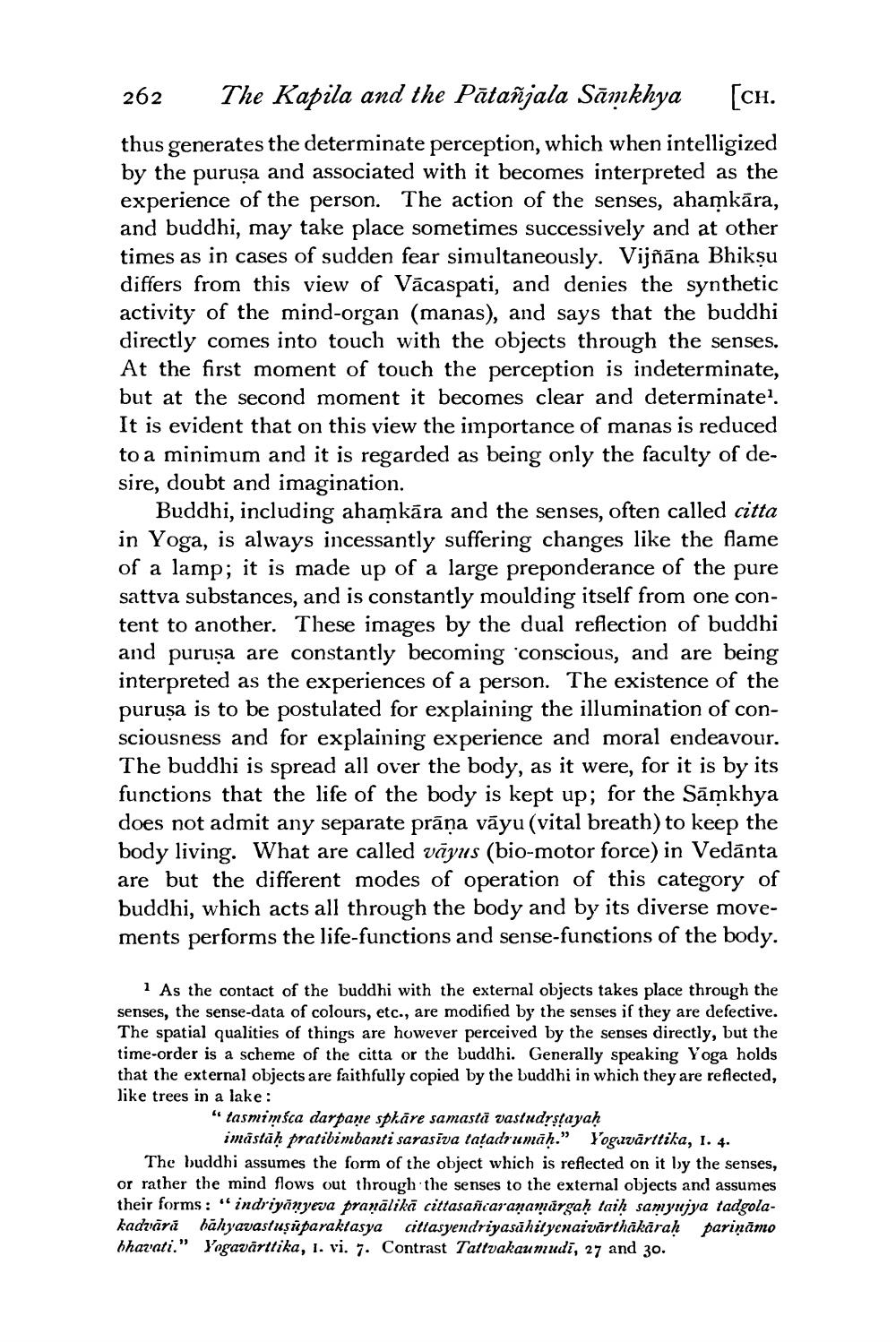________________
262 The Kapila and the Patañjala Sāņkhya [CH. thus generates the determinate perception, which when intelligized by the purusa and associated with it becomes interpreted as the experience of the person. The action of the senses, ahamkāra, and buddhi, may take place sometimes successively and at other times as in cases of sudden fear simultaneously. Vijñāna Bhiksu differs from this view of Vācaspati, and denies the synthetic activity of the mind-organ (manas), and says that the buddhi directly comes into touch with the objects through the senses. At the first moment of touch the perception is indeterminate, but at the second moment it becomes clear and determinate? It is evident that on this view the importance of manas is reduced to a minimum and it is regarded as being only the faculty of desire, doubt and imagination.
Buddhi, including ahamkāra and the senses, often called citta in Yoga, is always incessantly suffering changes like the flame of a lamp; it is made up of a large preponderance of the pure sattva substances, and is constantly moulding itself from one content to another. These images by the dual reflection of buddhi and purusa are constantly becoming conscious, and are being interpreted as the experiences of a person. The existence of the puruṣa is to be postulated for explaining the illumination of consciousness and for explaining experience and moral endeavour. The buddhi is spread all over the body, as it were, for it is by its functions that the life of the body is kept up; for the Sāmkhya does not admit any separate prāņa vāyu (vital breath) to keep the body living. What are called vāyus (bio-motor force) in Vedanta are but the different modes of operation of this category of buddhi, which acts all through the body and by its diverse movements performs the life-functions and sense-functions of the body.
As the contact of the buddhi with the external objects takes place through the senses, the sense-data of colours, etc., are modified by the senses if they are defective. The spatial qualities of things are however perceived by the senses directly, but the time-order is a scheme of the citta or the buddhi. Generally speaking Yoga holds that the external objects are faithfully copied by the buddhi in which they are reflected, like trees in a lake:
"tasmimśca darpane spkāre samastā vastudrstayaḥ
imāstāḥ pratibimbanti sarasīva tatadrumāḥ.” Yoguvārttika, I. 4. The buddhi assumes the form of the object which is reflected on it by the senses, or rather the mind flows out through the senses to the external objects and assumes their forms: "indriyanyeva pranālikā cittasañcaranamárgaḥ taih samyujya tadgolakadvārā bāhyavastusüparaktasya cittasyendriyasühit yenaivārthākārah pariņāmo bharati." Yogavārttika, 1. vi. 7. Contrast Tattvakaumudi, 27 and 30.




